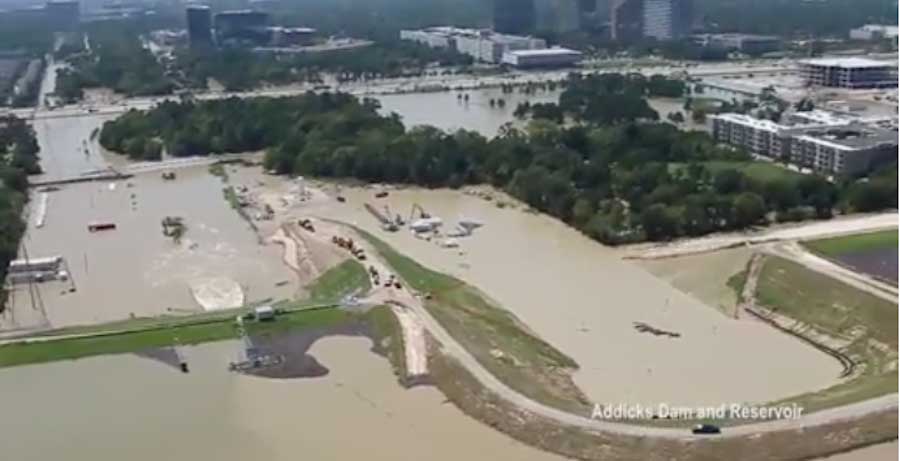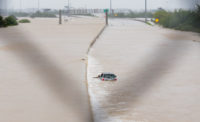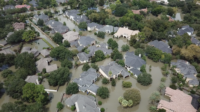The U.S. Army Corps of Engineers is continuing controlled releases of massive amounts of water from the Addicks and Barker dams to maintain the Houston reservoirs’ stability. Rainfall and the high level of water in the reservoirs means that ongoing work to install new outlet structures will be postponed by at least a month.
Addicks and Barker Reservoirs are at 100% and just below 100% capacity, respectively, says Richard Long, natural resource management specialist on the operations team for Addicks and Barker with the U.S. Army Corps of Engineers Galveston District.
The volume of water is also causing an uncontrolled release around the ends of one of the spillways, which should be ameliorated by the high rate of controlled releases.
The volume of water is also causing an uncontrolled release around the ends of one of the spillways, which should be ameliorated by the high rate of controlled releases.
“We are not seeing any issues, no stresses or anything like that. We’re walking the project 24/7 to check for any issues that may come up, and so far everything’s been going good other than it’s wet out here,” Long says.
While levels are constantly changing at both reservoirs, Addicks was slightly above 108 ft and Barker was slightly above 101 ft on Aug. 31, and both are falling very slowly.
“Our goal right now is to leave the releases right where they are into the next week and a half or so, until we get the reservoirs in the balanced state that we’d like,” says Long.
Discharge rates were increased to approximately 7,000 cfs. The Corps is targeting eventual releases of 8,000 cfs for both dams.
The release amount could change depending on the situation at the reservoirs, “but right now our goal is to keep the releases right about where they are until we get rid of quite a bit of our water,” Long says.
The Corps plans to continue to drain the reservoirs until they are dry and then examine the water control structures and other infrastructure to make sure no damage has been done by the high water levels following Hurricane Harvey.
“Nothing has been indicated at this time and we’ll continue the inspections around the clock until the pools get to a level that we feel are accessible and comfortable,” Long says.
Both dams, originally built in the 1940s, were designated as extremely high risk structures in 2009, based on technical issues concerning the safety of the dams and the potential consequences to the city should the outlet structures fail.
Work began in 2016 on new outlet structures at both dams.
“We’re really fortunate in that the cofferdams, and there’s one each at Addicks and Barker, those have been fully constructed and they’re built to the exact same standards as the current dam or the existing dam, so they are performing well,” says Ralph E. Steiner, area engineer and administrative contracting officer for the new outlet structures being built at Addicks and Barker.
In 2015, the Corps awarded a $72 million contract to Granite Construction Co. for construction of new outlet structures.
Hurricane Harvey Delays Dam and Reservoir Work
This rain event will delay work considerably, by at least a month to six weeks before Granite’s teams will be able to get back to work, Steiner says.
“Currently the contractor is required to be complete in February 2020. However, with this event, we expect that we will extend the contract as soon as we know the full extent of the delays, probably until sometime in the middle of 2020,” he adds.
The outlet structures will be built using concrete and be backfilled just like the main dam, Steiner explains.
“Once [the structures are] fully constructed, we will remove the cofferdams and place it in service,” he says. “The contractor is only about 25% complete right now, so there’s quite a bit of work left to go.”
Current inspections show that none of the existing structures have any issues are experiencing any stresses so far, Long adds.
“It’s a wait and see at this point. We’re prepared for the worst, hoping for the best, and hoping for as many dry days as we can get over the next month,” he says.






Post a comment to this article
Report Abusive Comment